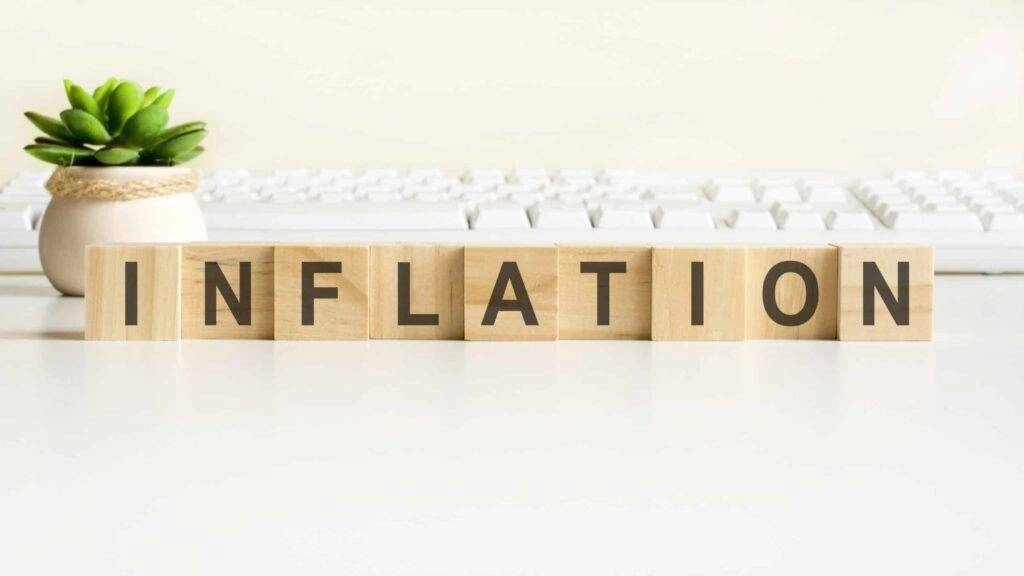Why is inflation in 2021 happening? Due to increased vaccination coverage and the accelerated opening of economies after the lockdown, demand for goods and services began to grow faster than expected, creating great pressure on prices.
Anyone who followed the news from the financial and investment sector last month could not avoid the main topic that has not been in the f ocus of investors for years, namely the phenomenon of high inflation.
ocus of investors for years, namely the phenomenon of high inflation.
Inflation as an economic phenomenon is always present in the modern economy, but in recent months there has been a growing fear that inflation is too high and could seriously damage the US and, by extension, the global economy.
The price increase (excluding energy and food) was as high as 0.9% in April 2021 compared with March 2021, the largest monthly jump since April 1982.
Disrupted supply chains
It is therefore not surprising that many are expressing concern that inflation is exceeding expected levels, and there is no sign that price rises will ease in the coming months. Looking at the prices of many commodities such as timber, oil and corn over the past year, their growth is often reported in triple-digit percentages.
The emergence of the so-called Corona crisis has had a direct effect on the rise of inflation, and its effects can be seen through several channels. The first channel is a disruption in global supply chains caused by mass farm closures due to the spread of the virus.
There were numerous delays in the delivery of various goods, causing shortages in many markets, the consequences of which are still being felt today. A good example is the microchip market, the price of which rose sharply during the pandemic due to the shortage.
The second channel through which the pandemic affected inflation is, paradoxically, the cessation of the pandemic. Indeed, as vaccination coverage increased and economies opened up at an accelerated pace after the lockdown, demand for goods and services began to grow faster than expected, creating a large downward pressure on prices.
Many saved more than usual during the shutdown because they had nothing to spend and now have a certain amount of money they are willing to spend at one time, and economic laws require that increased demand with the same or even reduced supply leads to higher prices.
Large amount of money
The third channel, in the opinion of many the most important, relates to monetary policy. The creation of new money out of thin air in unprecedented quantities has triggered fears of inflation among many, and the growth of the money supply is best seen in the US, which has seen a large rise in stock prices in the midst of a pandemic.
This is because a lot of the new money in the investment markets ended up in stocks, real estate and cryptocurrencies, so the prices of these investment instruments also rose. In the event of a new high inflation, the worst off are those who hold their assets in the form of money – either cash or in a bank account. 
In times of low interest rates, inflation reduces the value of money, which is worth less by the day, and savers are the most affected in this case.
More and more people are therefore turning to some kind of investment to protect their assets from losing value due to the effects of inflation, and one such type of investment is investment gold, which is becoming more and more common among Croatian investors.
This happened before
If we look at history, during any high inflation, it was more profitable to hold real assets than financial ones, which directly depend on the value of the currency.
When negative interest rates from central banks are added to the money supply, the forecasts become more complex. The Fed has announced it will raise the discount rate in two steps next year, causing panic among stock market speculators who have learned for years to flood government money without it losing value.
Thomas Mayer of Flossbach von Storch Institute, a Cologne-based business school, has long complained about the low discount rate European Central Bank. He doesn’t think the panic among stock market speculators is justified, but this time he warns that the “old mechanisms” central banks use to curb inflation no longer work because they are “cracked,” he writes in a guest article for Die Welt.
If you believe inflation is coming, it will come…
“The European Central Bank cannot introduce more fundamental interest rates without endangering the stability of highly indebted countries like Italy,” warns Gabriel Felbermayr of the Kiel Institute for the World Economy. In sum, this means we will have to get used to a higher inflation rate. The institute estimates it will be 2.6% this year, the highest since 2008, but even that’s not the end of it: “We’ll have to get used to price increases even after the effects of the pandemic are over.”
Friedrich Heinemann of the Center for European Economic Research in Mannheim is also a little concerned for several reasons. The first is psychological: especially in the United States, many already believe that inflation is coming – and so it will. And if then the inflation rate in the US is currently at 5%, it could really lead to a vicious circle: “This 5% inflation in the US was really a real shock. We know that prices and wages in the US are much more flexible than in Europe, so the rate of increase has been much more responsive to the recovery of the economy. But such a high percentage was still a surprise. ”
Billion-dollar aid packages inevitably affect the value of money
The second is even more serious: in March of this year, the US approved the largest stimulus package in the country’s history, amounting to $1.9 trillion – 8% of gross domestic product and more than twice the stock market value of all the companies listed on the German Dax. And such a pile of money will inevitably affect their value.
“Biden’s government is creating debt at a pace never seen in peacetime. And the Fed with Powell is still offering 0% interest rates so that such historically high deficits can be financed at all,” Heinemann said.
In Europe, he said, this can be seen to some extent, but “European finance ministers are still babies with new debt compared to US Secretary Yellen. This mix of new debt, central bank purchases of securities and a zero percent discount rate is already so extreme in the U.S. that there is an unpleasant surprise of inflation.”
In any case, there is growing pressure on central banks to “calm” the threat of inflation, especially when it comes to buying securities. But the money market has already become a real drug in its dependence on “cheap” money from central banks. Even a reduction in this “dose” could trigger a shock in the money market.
Is there anything more central banks can do?
“It’s a big problem,” Heinemann admits. “In Europe, the US and Japan, central banks have been seen for decades as the guarantors of stability for banks, stock markets and sovereigns. So far, everything has gone well because we haven’t had a real inflation spike in decades. Maybe now it’s a test. “Are central banks really still free and independent to fight for price stability. I have my doubts about that at both ECB and the Fed, albeit for different reasons,” says the Mannheim-based economist.
After all, the US cannot afford a sudden and lasting drop in value on the stock markets, because it would endanger not only private property but also the pension funds there. And Europe cannot afford high interest rates without endangering indebted countries like Italy, which are “completely hooked on the negative interest rate bottle ECB,” Heinemann said. And that dependence has increased during the pandemic, so central banks can really get into a situation where inflation is rampant – and they have no tools to contain it.
Now is the right time!
There are still chances – but you also need esprit and determination. And that should start now. “It would be good if both Lagarde at the ECB and Powell at the Fed would carefully but quickly change direction. The sooner they start preparing the market for the exit from extreme expansion, the easier it will be not to ‘slam on the brakes’ later,” says the economist. The solution seems logical and simple: it is these stimulus programs that must replace this artificial maintenance of low interest rates in indebted countries.
Now is the right time: the European Commission has just started sending the first billions from a package of 750 billion in stimulus aid to member states. “You can hardly expect a better time for a slow exit from this drug ECB with zero percent interest rates,” Heinemann says.



